8 August 2012
Retirement costs increase as food costs fall but electricity prices rise
A couple looking to achieve a ‘comfortable’ retirement will need to spend $55,213 a year, while those seeking a ‘modest’ retirement lifestyle will need $31,760 a year according to new figures released today for the ASFA Retirement Standard in the June quarter.
These figures are up by one per cent and 1.1 per cent respectively on the June quarter 2011 figures, which indicated a couple needed to spend $54,954 a year for a comfortable retirement and $31,519 a year for a ‘modest’ retirement lifestyle. In comparison, the increase in the All Groups Consumer Price Index (CPI) was 1.2 per cent over the year.
The change in retirement costs was also low between the March and June quarters 2012, up by 0.2 per cent at the comfortable level and 0.4 per cent at the modest level (see Table 1 for budget breakdown).
Retirees benefited from price falls or only modest price increases across a range of important components of retirement budgets. Over the year, food costs fell by 3.2 per cent, in part due to a decrease in the price of bananas and more favourable growing conditions for other fruits and vegetables. Clothing and footwear costs increased by a modest 0.6 per cent over the year and communication costs by 0.9 per cent, while recreation and culture costs fell by 1.6 per cent.
On the other hand, health costs rose by 1.5 per cent in the quarter and 3.6 per cent over the year, with increases in health insurance costs playing an important role. Of most significance however was the rise in electricity costs which increased by a substantial 10.6 per cent over the year to 30 June 2012.
The increase in costs over the quarter for retirees was slightly lower than the 0.5 per cent increase in the All Groups CPI.
Retiree households on average have somewhat different spending patterns to the rest of the population. Along with generally owning their own home outright (so cost increases for housing are less important for retirees), they don’t tend to spend much on education services. In contrast, food, health, transportation and recreation spending form a large part of retiree budgets.
However, especially over the longer term, it is not unusual for the effects of the various differences to largely cancel out.
Table 1: Budgets for various households and living standards (June quarter 2012)
| Modest lifestyle – single | Modest lifestyle – couple | Comfortable lifestyle – single | Comfortable lifestyle – couple | |
| Housing – ongoing only | $58.82 | $56.46 | $68.17 | $79.02 |
| Energy | $35.08 | $46.59 | $35.60 | $48.28 |
| Food | $73.49 | $152.23 | $104.98 | $188.97 |
| Clothing | $18.02 | $29.25 | $39.00 | $58.50 |
| Household goods and services | $26.10 | $35.50 | $73.65 | $86.27 |
| Health | $36.38 | $70.22 | $72.18 | $127.40 |
| Transport | $94.00 | $96.74 | $140.19 | $142.86 |
| Leisure | $71.05 | $105.86 | $215.32 | $295.08 |
| Communications | $9.29 | $16.26 | $25.53 | $32.49 |
| Total per week | $422.38 | $609.10 | $774.63 | $1,058.87 |
| Total per year | $22,024 | $31,760 | $40,391 | $55,213 |
The figures in each case assume that the retiree(s) own their own home and relate to expenditure by the household. This can be greater than household income after income tax where there is a drawdown on capital over the period of retirement. Single calculations are based on female figures. All calculations are weekly unless otherwise stated.
The ASFA Retirement Standard is an initiative of the Association of Superannuation Funds of Australia (ASFA) benchmarking the annual budget needed by Australians to fund either a comfortable or modest standard of living in the post-work years.
It is updated quarterly to reflect inflation and provides detailed budgets of what singles and couples would need to spend to support their chosen lifestyle.
Modest lifestyle in retirement
Better than the Age Pension, but still only able to afford fairly basic activities.
Comfortable retirement lifestyle
Enabling an older, healthy retiree to be involved in a broad range of leisure and recreational activities and to have a good standard of living through the purchase of such things as: household goods; private health insurance; a reasonable car; good clothes; a range of electronic equipment; and domestic, and occasionally international, holiday travel.
More information
Costs and summary figures can be accessed via the ASFA website.
For further information, please contact:
Pauline Vamos, CEO, 0433 169 342
Rebecca Glenn, GM Marketing and Communications, (02) 8079 0825 or 0416 170 439
Megan McDougall, Media and Communications Co-ordinator, (02) 8079 0849
About ASFA
ASFA is the peak policy, research and advocacy body for Australia’s superannuation industry. It is a not-for-profit, sector-neutral, and non-party political national organisation whose aim is to advance effective retirement outcomes for members of funds through research, advocacy and the development of policy and industry best practice.

